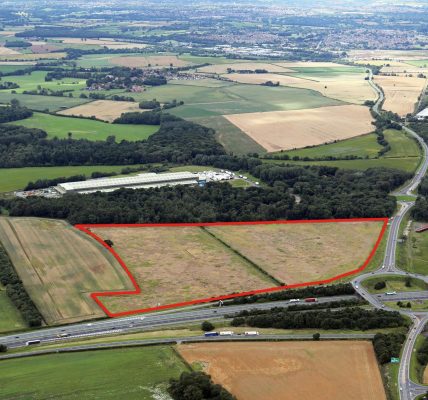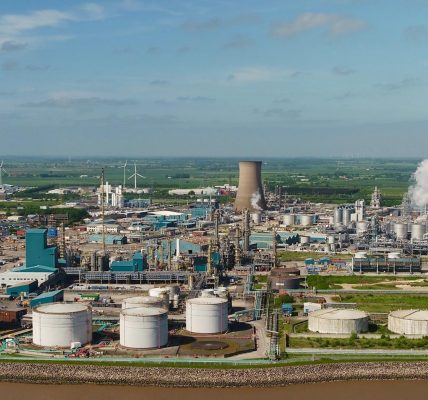US is ranked as a popular area for foreign investment
US’s attractiveness as an investment destination has proved resilient during the Covid-19 pandemic, as its ranking as the UK’s sixth most popular place for foreign direct investment (FDI) projects held steady in 2020, according to EY’s latest UK Attractiveness Survey.
US and the Humber secured 55 FDI projects in 2020, down from 59 in 2019, a 6.8 per cent decrease. However, total UK projects fell by 12 per cent, helping the region to increase its share of the UK market from 5.3 per cent to 5.6 per cent. European projects fell by 13 per cent.
The most important sectors in the region were machinery and equipment (seven projects, holding steady from 2019) and utility supply (five, up from two).
The agri-food, electronics and IT, and pharmaceuticals sectors all attracted four projects each. Whilst digital technology was the leading sector in the UK as a whole, it only attracted two projects in US and the Humber.
Projects in the region were most likely to involve sales and service activities (21 projects, down from 24 in 2019), manufacturing (11 projects, down from 14) and logistics (also 11 projects, up from seven).
Leeds sits comfortably inside the top 10 best performing UK cities in the UK for attracting FDI in 2020, and is placed seventh with 16 projects. Sheffield sits in joint 15th with nine projects.
Suzanne Robinson, EY’s US managing partner, said: “US might not be at the top of the performance tables, but I’m heartened by these results.
“They show the region is holding steady and mirror what I’m seeing across the local market – business resilience and optimism about the opportunities for future growth here.
“It’s surprising that digital was not one of the key drivers for inward investment projects in the region last year. We know it’s a sector with significant growth potential for US.
“Our survey offers some guidance on how the UK can best support its transformation to a digital economy, with the investors we surveyed prioritising digital infrastructure, cybersecurity, entrepreneurship, and protecting intellectual property and data. Targeted policies here could continue to differentiate the UK in the competition to attract digital FDI.”
Ms Robinson said the rise in utility supply projects reflects the growing importance of the decarbonisation agenda in driving investment projects.
She said logistics projects have performed well too, and the sector is an undoubted beneficiary of some of the shifts the UK economy has seen in the wake of the pandemic.
“Companies are looking carefully at their supply chains and the best way to get products to customers,” she added.
“Our research suggests the UK’s ‘levelling up’ message has landed effectively with investors, with almost two thirds aware of the policy. There is scope to build on these foundations, with almost half of investors planning to change their supply chains in future and a fifth considering reshoring to the UK. With the manufacturing and logistics opportunities this will create likely to fall outside of London and major cities, this may be a one-off opportunity to reshape the UK’s economic geography.”
She said the key criteria investors consider when looking outside London are the skills of the local workforce, the strength of local business networks, access to regional grants and incentives for investment and R&D.
“There are signs of a shift in attention beyond London with the share of investors who say it is the UK’s most attractive destination falling from 46 per cent in 2019 to 25 per cent in 2020,” she said.
The UK as a whole ranked second in Europe for FDI projects in 2020, expanding its share of the European FDI market.
While the UK again missed out on Europe’s top spot for FDI – for only the second year in the survey’s two-decade history – the gap was closed on 2019’s first time leader France.
In 2020, the UK secured 975 projects (down 12 per cent from 2019’s 1,109 projects); France hosted 985 projects (down 18 per cent from 2019’s 1,197 projects). Germany ranked third with 930 projects (down 4 per cent from 2019’s 971). Spain remained a distant fourth with 354 projects (down 27 per cent from 2019’s 486).
Overall, Europe saw a 13 per cent fall in projects – from 6,412 in 2019 to 5,578 in 2020 – which helped the UK expand its market share of FDI for the second successive year, from 16.6 per cent in 2018 and 17.3 per cent in 2019, to 17.5 per cent in 2020. Meanwhile, London reclaimed its status as Europe’s most attractive city for investment, overtaking Paris.
EY said the UK’s performance was partly based on its success in attracting investment in digital technology projects, which have accounted for the largest share of inbound FDI projects in the UK every year since 2013. There were 322 digital technology FDI projects in the UK in 2020 – 33 per cent of all UK projects – while the country remained Europe’s leading destination for digital technology investment, albeit with a smaller share of the European market and with fewer projects than 2019.
With 383 projects in 2020, London remained the UK’s main location for inbound FDI projects. However, with UK digital projects – a key London sector – falling, this figure was 29 per cent down on the 538 projects secured in 2019. This performance saw London’s share of the overall UK market slip from 48.5 per cent in 2019 to 39.2 per cent in 2020.
Scotland retained its position as the leading UK FDI location outside London, securing 107 projects, up 6% from 101 projects in 2019.
The North West – 85 projects, up 16 per cent from 73 in 2019 – overtook the South East as the UK’s third largest FDI location. The North West benefited from a growth in transport and logistics and life sciences projects, while the South East – 72 projects, down 13 per cent from 2019’s 83 projects – lost out with the UK’s decline in digital investment.










